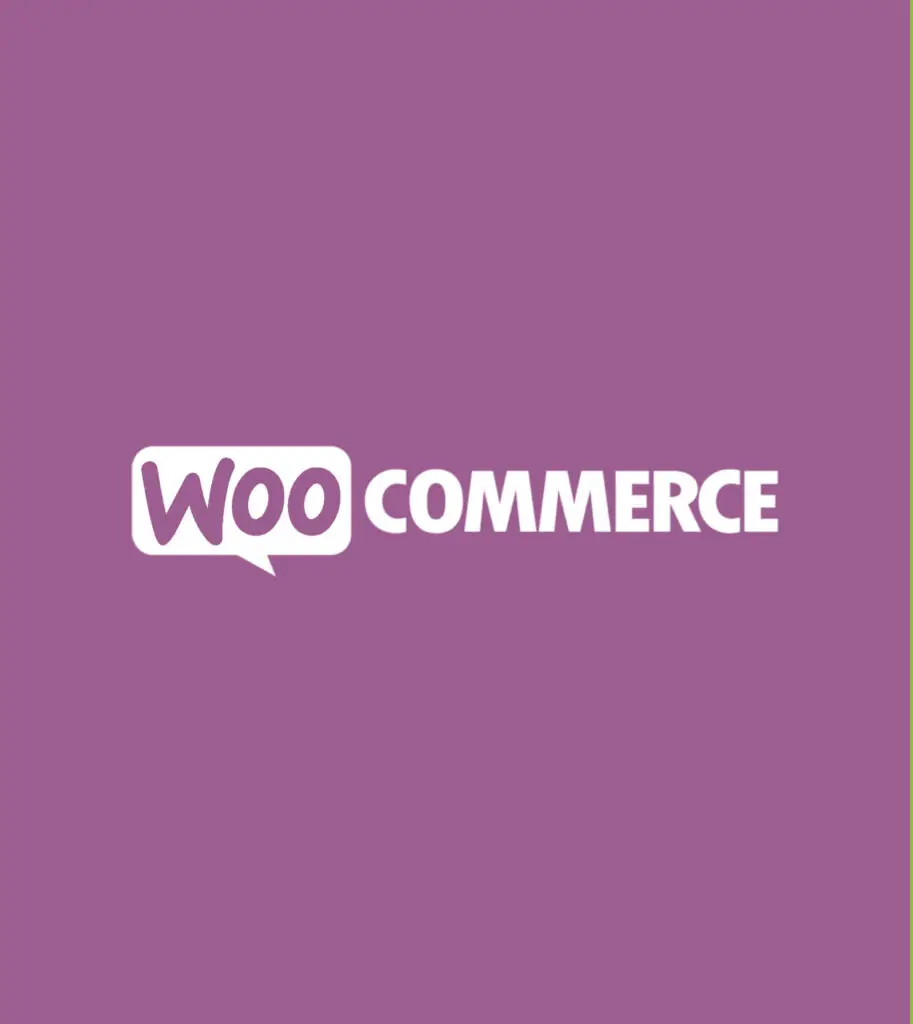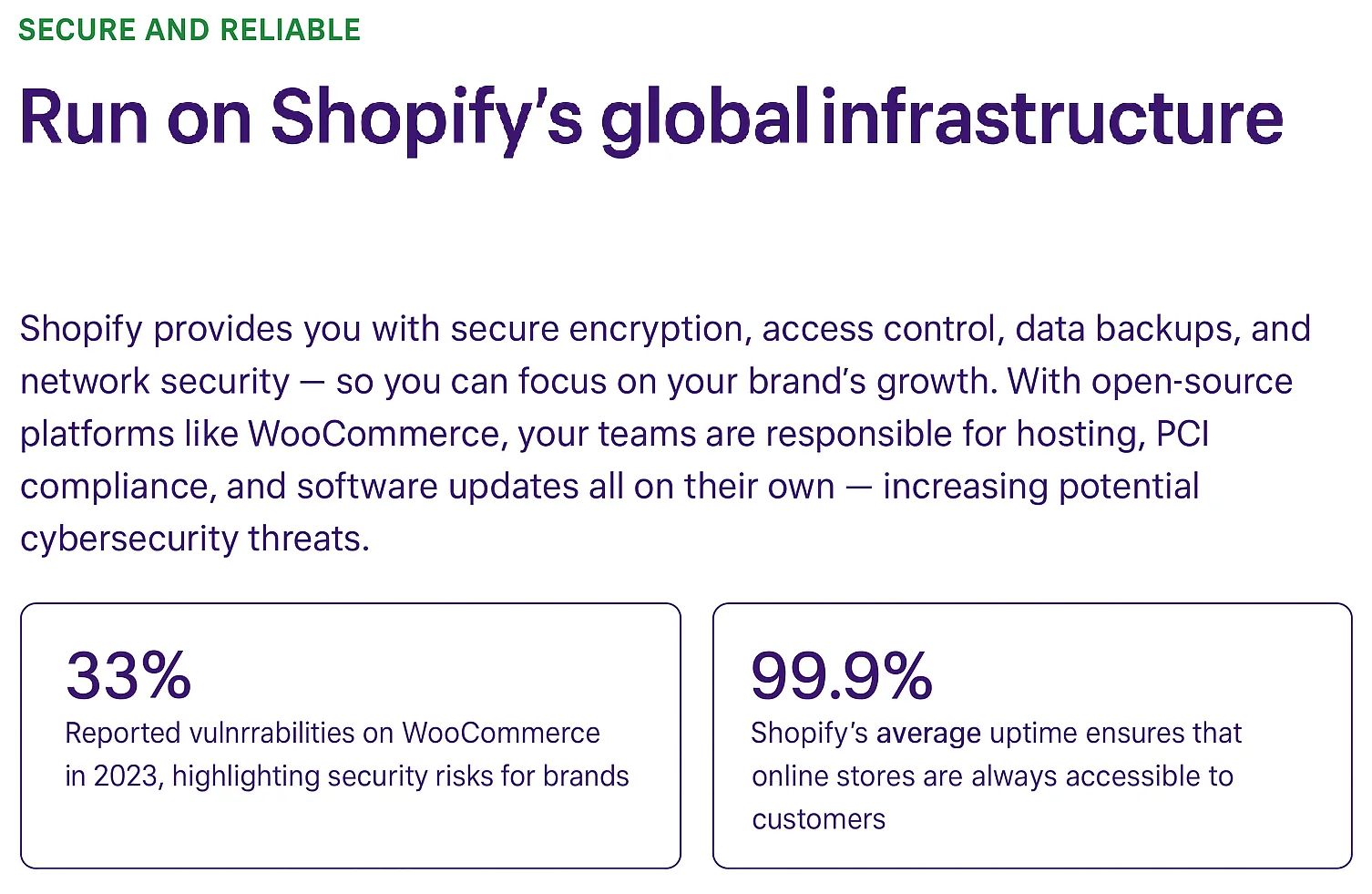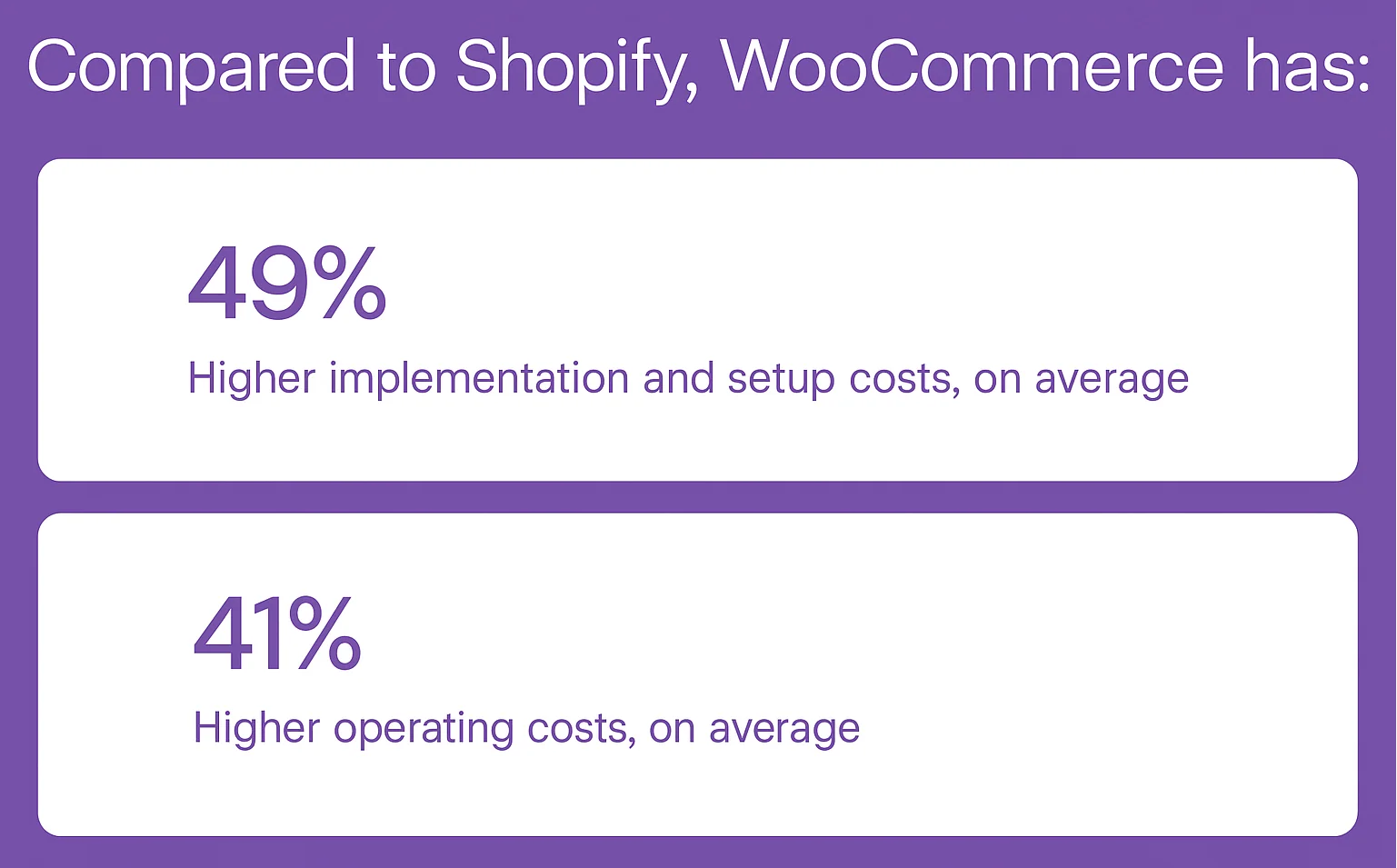Replatforming: From WooCommerce to Shopify
Written and edited by: Eric

Hey everyone! How goes it?
Eric Boisjoli here again, and this time I think we’ll finally dive into maybe the most emotionally charged technical decision in online retail … Leaving one e-commerce platform for another. Specifically WooCommerce for Shopify. Now, before WordPress loyalists in today’s audience start reaching for their pitchforks, let me be clear. I get it. You have poured years into building your Woo store. You’ve customized every pixel, wrestled with every plugin, and almost certainly have the PHP battle scars to prove it. Starting over feels a bit wasteful or even a bit like betrayal
Here’s the thing though, people even smarter than me call that feeling the sunk cost fallacy. Sometimes the best business decision is admitting your current setup is holding you back. And you’re reading this, so you’ve probably already had one of those up at 3 AM, middle of the night, moments of clarity after a checkout freeze during dollar discount day, or you had to spend a day updating overloaded or outdated plugins rather than responding promptly to customer service requests.
So let’s just talk about jumping from WooCommerce to Shopify. Not as platform evangelism, but as a technical reality check for merchants who’ve already decided their future may lie elsewhere.
Why Migrate From WooCommerce to Shopify?
Look, WooCommerce is powerful. It’s “free.” It’s gosh darn customizable. But those air quotes around “free” were doing more than a little heavy lifting because “free” comes with hidden costs.
Here’s what WooCommerce’s “flexibility” actually costs you:
Hosting That Actually Works: Yes, you can run WooCommerce on a $5/month shared host. You can also live on ramen noodles. But. Neither is a sustainable strategy. Real WooCommerce hosting that won’t buckle under Boxing Day sale traffic starts around $109-400 per month for managed WordPress hosting, and can be as high as $500-1000.
The Insecurity Tax: You hear new news about the vulnerability of WordPress to attack every week.. The WordPress vulnerability database tracked over 8,000 security issues in 2024 alone. That means constant vigilance, updates, and certainly a top shelf security plugin subscription that’ll run even the average mom n pop shop another $200-300/year.
The Plugin Paradox: Need split testing? There’s a plugin. Cart recovery? There’s a plugin. Inventory management? There’s a plugin. Each one attached to hours of how-tos and what-ifs, in addition to official documentation, which is frankly one of the platform’s selling points in most use cases. But once your store isn’t “most” cases anymore, you’re just left juggling dozens of plugins, and each one expands your website’s attack surface, has its own update cycle, resulting potential theme or interoperability conflicts, and more.
Developer Dependency: Unlike with Shopify’s standardized Liquid templating, each and every WooCommerce website is its own unique, custom coded, snowflake. So whenever original developers depart for bigger-better things (which really is just a normal thing that happens, not an alarmist scare), merchants get stuck paying premium rates for someone to decode their “creative” solutions.
The Difficulties of Upscaling WooCommerce
Of course, those are all just headaches, the cost of doing business if you will, the real wake-up call usually comes when a retailer decides it’s time to scale up their operation. That’s when they find out that WooCommerce can handle some growth, given sufficient server resources, caching layers, and database optimization wizardry. But that’s a fairly long list of qualifiers in this context.
So, reaching that point always leads them to another question: At what point does loyalty to WooCommerce become more expensive than simply using an enterprise-ready ecommerce platform?
Some common breaking points I’ve seen:
-
- The 50,000 Product Threshold: Database queries start choking
- The Traffic Spike Site Crash: When it’s time to Google “catastrophic success”
- The International Nightmare: Multi-currency, language, warehouse … multi-problems
- The Mobile Performance Wall: When plugins optimized for desktop tank your mobile conversion rates
Why WooCommerce Merchants Jump to Shopify
Concluding that you’ve grown beyond WooCommerce is rarely the result of one catastrophic platform failure. As you can see from the above, it’s more of a death by a thousand paper cuts type thing.
Shopify’s infrastructure just works. Period. They handle the CDN, the scaling, the security, the updates. Your job is selling, not server administration. A Stanford study from 2022 found that even a one-second delay in page load time can reduce conversions by up to 7%. When every millisecond counts, Shopify’s global infrastructure becomes a competitive advantage to retailers.
Shopify’s App Ecosystem Advantage
WooCommerce’s plugin ecosystem is vast but chaotic. Shopify’s app ecosystem is curated and more importantly, monitored. Apps must meet standards, maintain compatibility, and can’t just disappear overnight. When you install a Shopify app, you’re not gambling on some developer’s side project.
WooCommerce to Shopify Data Migration
You’re convinced. Finally. Now comes the fun part where you actually move your store. And by “fun,” I mean “enough technical complexity to keep you up at night, but also pay off in the end.”
WooCommerce and Shopify literally speak different languages. So your data needs translating:
Products: This one will seem simple until you remember that WooCommerce’s flexible product attributes don’t really map to Shopify’s more structured variant system cleanly. Like those 55 custom fields you added? It’s time to figure out which ones actually matter.
Customers: Password hashes won’t transfer (different encryption methods), so prepare for a password reset campaign. Order history can migrate, but payment methods need re-entry for security.
Orders: Historical data can move, but expect fun with order numbers, tax calculations, and shipping methods that don’t quite align.
The URL Challenge: And here’s where SEO enters the chat. WooCommerce and Shopify have completely different URL structures. Your product URLs, category pages, even your blog posts, everything changes. We’ll touch on this briefly, but honestly, the SEO implications of replatforming deserve their own novel, er, blog post (Coming Soon!)
Custom Functionality Translation
That custom plugin your developer built three years ago? Yeah, about that…
Every WooCommerce customization needs evaluation:
-
- Is it actually necessary? (You’d be surprised how often the answer is no)
- Does Shopify have native functionality for this? (Often yes)
- Is there a Shopify app that does it better? (Usually)
- Do we need custom development? (Last resort)
The good news: Shopify’s standardization means common customizations often already exist as apps. The bad news: truly unique functionality might need rebuilding from scratch.
Plugin to App Mapping
Your stack of WooCommerce plugins probably looks something like a Jenga tower a couple of hours in. Here’s how a few of the most common plugins will map onto your new Shopify setup:
-
- Yoast SEO = Shopify’s built-in SEO + apps like SEO Manager
- Advanced Custom Fields = Metafields + specialized apps
- WPML = Shopify Markets
- WooCommerce Bookings = BookThatApp, Sesami
- WooCommerce Subscriptions = Bold Subscriptions (Yes! That’s a shameless plug)
The key thing at this phase will be identifying which woo plugins were mission-critical versus were nice-to-have. And. Also. You’re going to find out that at least some of your “favorite” plugins were band-aids for limitations WooCommerce had that Shopify doesn’t and handles natively.
Common Migration Pitfalls and How to Dodge Them
The Exact Replica Trap: The biggest mistake you could make here is trying to recreate your WooCommerce store pixel-for-pixel in Shopify. That’s like buying a Rivian R1S and making it make engine noises. Embrace Shopify’s conventions. They exist because they work.
The Data Integrity Disaster: Nothing will torpedo your migration to Shopify faster than corrupted data. So. Test, verify, test again. Run parallel systems. Compare order totals. Check inventory levels. Paranoia though generally frowned upon will be your friend here.
When Will Specialized Agency Help Make Sense?
Look, I love a technical challenge as much as the next Winnipegger in winter. But e-commerce platform migration really isn’t the kind of project you can tackle over a long holiday weekend, it’s a major transformation of your business.
So consider reaching out to an agency for help when…
-
- You have complex integrations (ERP, warehouse management, custom APIs)
- Your store has over 1,000 SKUs
- You really can’t afford downtime
- Your customizations are critical and customer facing
- You’re processing enough revenue that a botched replatform would cost more than an agency
This is exactly where Bold Match can come in handy. We’ve vetted agencies that specialize in complex platform migrations. Now, don’t worry that was not the start of my big sales pitch. Just saying. The experienced devs at a specialized agency will know which data fields matter, which customizations to keep, and most importantly, what can go wrong.
When you are picking up and moving your entire business, those aren’t just little details, they are all the details that will matter.
The Emotional Side of Moving On From WooCommerce
Leaving WooCommerce is probably going to feel a bit like admitting defeat. You invested your time and your money, and wrangling it all into shape may even have resulted in a gray hair or three. It’s work that you’re proud of and progress that you’re not-irrationally proud to have made.
Except. Your e-commerce platform is more of a tool, than a relationship. The best platform for you is always just going to be whichever one lets you focus on growing your business instead of maintaining your site. So. If you’re spending more time updating plugins than attracting customers, it’s time to make a change.
Is Your WooCommerce Store Holding You Back?
If you’re still on the fence re replatforming to Shopify? Just ask yourself …
-
- What could you accomplish if you weren’t playing server administrator?
- How much revenue are you losing to performance issues?
- Is your platform enabling or constraining your growth?
- What’s your actual TCO? Include developer time, hosting, plugins, and opportunity cost?
If WooCommerce is working for you and genuinely working, not just “we’ve gotten it to work then stick with it. But if you are reading this at 5 AM because your site is down again, maybe it’s time. Replatforming from WooCommerce to Shopify won’t just be a technical migration, it’ll be a business decision that will touch every aspect of your operation. It’ll be complex, occasionally it’ll be frustrating, and it will require fairly careful planning. But for online retailers who’ve outgrown WooCommerce’s flexibility at all costs approach, Shopify will offer something that’s really pretty powerful: predictability. Predictable costs, predictable performance and predictable scaling.
Whether you’re still researching or ready to pull the trigger, remember that successful migrations aren’t about rushing, they’re about planning. Take inventory of what actually matters, map out your must-haves versus nice-to-haves, and build a realistic timeline. And if the complexity feels overwhelming? That’s normal. This is exactly why agencies specializing in replatforming exist. Sometimes the smartest move is admitting you need a guide who’s been down this path before.
Well. Think that’s gonna be all from me today folks. Gotta run and debug a nasty N+1 query problem that’s hammering the database during product syncs. Hope this helped you explore your replatforming options or even just wrestle with the decision a bit better. But, if you need more than a blog’s worth of help navigating the complexities of e-commerce platform migration, don’t hesitate to reach out, to get help finding an agency that specializes in WooCommerce to Shopify migrations, remember, that’s exactly why we built Bold Match. — Eric B.

